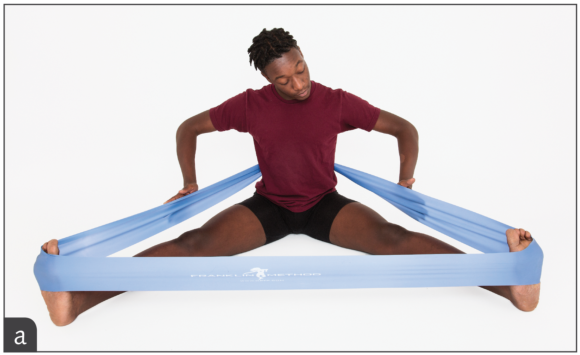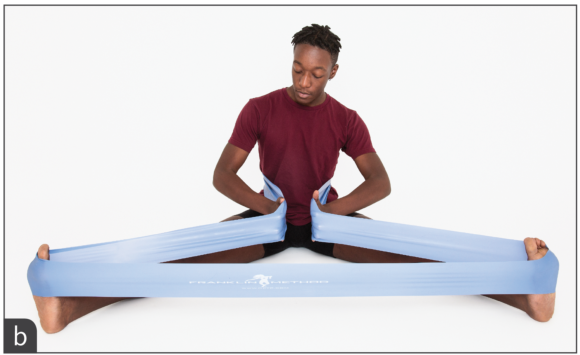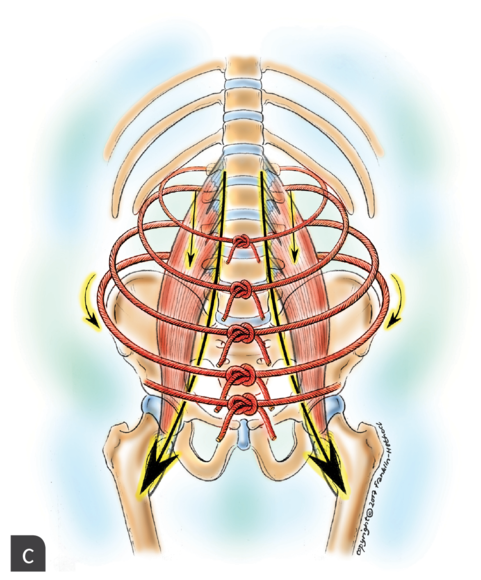Strengthening pectoral muscles
This is an excerpt from Conditioning for Dance 2nd Edition With Web Resource by Eric Franklin.
Inward Push
By reversing the movement in the preceding exercise, you will strengthen the pectoral muscles and release tension between the shoulder blades. The inward push engages the muscles that stabilize the shoulder joint and the abdominal muscles to create a sense of knitting at the front of the pelvis. The exercise also strengthens the musculature that moves the wrist and fingers.
- Sit with your torso upright and your legs stretched out in front of you at an angle of approximately 90 degrees. Place your hands such that your palms are facing the outside of the band. Spread the band so that it covers the whole palm of the hand, and position the arms at a downward angle with the elbows slightly bent (figure a).
- Move your hands toward each other to push the band toward the midline of the body (figure b).
- Move your arms back out. Take 3 counts to move them out and 1 count to move them in.
- Feel the psoas major muscle lengthening downward to create a sense of grounding while releasing the spine into length (figure c).
- As you move your hands toward the midline, imagine the transversus abdominis knitting together in the navel area. You can visualize the transversus abdominis as a rope or stack of ropes being tied firmly at the front of your body. Notice how this image creates a sense of width in the lower back.
- As with exercise 9.11, you can enhance this exercise by circling your feet while moving your arms in and out.



More Excerpts From Conditioning for Dance 2nd Edition With Web Resource
SHOP

Get the latest insights with regular newsletters, plus periodic product information and special insider offers.
JOIN NOW


